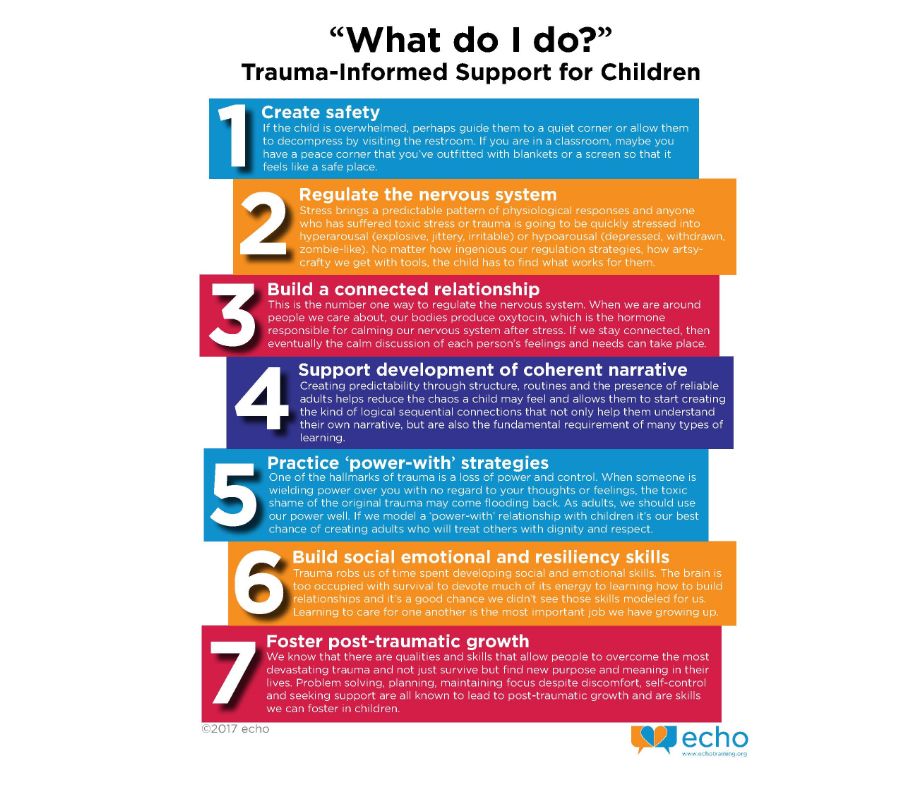Check out this great guide from Echo to learn how you can give #traumainformed support to children: http://bit.ly/2Fi4PAg
You’ve worked through the questions in our infographic “What Lies Beneath Behavior?” and instead of judging or punishing you’ve figured out the child is just trying to do the best they can to communicate whatever pain or distress lives inside of them… “So now what do I do?” you ask. As promised, we have produced a second infographic to provide you with a step-by-step guide to a trauma-informed response.
The bad news is that there is no manualized program, no one-size fits all solution, no magic wand we can wave. Childhood trauma usually comes as the result of a breach in relationship and trust, and the best way to heal it is to rebuild those things, slowly, painstakingly and with a lot of patience.
As we say at Echo, “50% of any interaction is you.” This means unless we are willing to look at ourselves and our reactions, no tools or skills are going to work in the classroom or in any other situation where we are having challenges with a child. Let me be the first to give you some empathy around this. No one asks to be abused, ignored, accused unjustly, reviled, not given any consideration, or whatever it is that may have caused stress hormones to race around your body and possibly bring you to tears. It is quite natural to feel sadness or anger. You matter. You do. And here’s where you take a deep breath, because in an adult/child relationship there’s only one grown up, and as much as you want to lash out or run away, by definition it’s got to be you.
So having given yourself some empathy and practiced some self-soothing, now you’re ready to engage. Follow the steps in the infographic to work out a trauma-informed response, that is to say, how your heart would like you to respond when you are free of stress and your own trauma triggers. Maybe the adults around you didn’t have these tools when you were a child. It is our good fortune that we do, and our responsibility to make sure that any painful history does not repeat itself.


